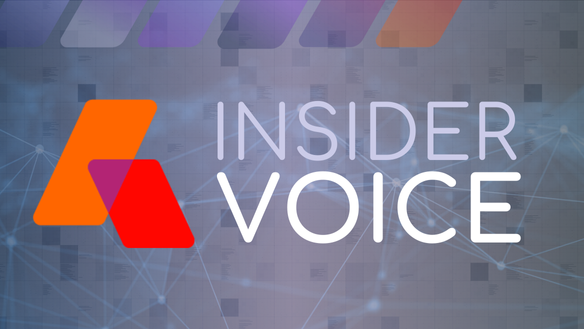Unlocking Media’s Future: Catalysts for Growth

Few industries are evolving at the pace of media. New AdTech models emerging, live sports exploding, and connected TV continuing to ascend. Especially CTV. The growth of CTV coming out of the pandemic has led to new monetization opportunities for media as well as costly operational challenges to solve. Media companies that figure out how to best monetize new growth catalysts and how to most effectively and flexibly manage operational challenges will be the winners of this decade.
The key: centralizing and activating their data.
Catalyst: Millennials and Gen Z
Millennials and Gen Z together constitute a massive monetization opportunity for media companies. Millennials alone are the largest demographic segment in the United States; together, Millennials and Gen Z constitute roughly 43 percent of the population.

Monetizing these populations requires media companies to cater to their digital habits and their values — for example, establishing a strong presence on these platforms by creating engaging, authentic content tailored to these audiences’ preferences. This is what CBS does. CBS News replicates its top stories in a TikTok-friendly format with anchors breaking down news, resulting in millions of views. Yes, TikTok’s future in the United States is fraught with drama and litigation. But Gen Z is 3.2 more likely to spend on TikTok Shop than the general population, and intent-based behavior is attractive to advertising there.
Things get really interesting when you consider how cost conscious these generations are. They are open to free, ad-supported tiers alongside paid subscriptions to cater to their preferences for free content. Indeed, about 68 percent of Millennials surveyed by Samba TV said they have an ad-supported streaming subscription (more than any other generation).
But convincing advertisers means that media companies need to rethink what they deliver. They need to shift their focus from delivering audiences to delivering performance, or customers. Advertisers are continuing to push for more and more performance metrics, or outcomes. They want more granular, targeted data to convert these audiences into customers. It’s not enough for an advertiser to target men or women aged 18-24. How many Gen Z gamers in-market for functional food and beverages can an advertiser reach and convert? If you can deliver that kind of data, you can deliver higher premiums with more rich audience targets.
To meet advertisers’ expectations, digital media companies can lean into their own first-party data, and they are also working with retail media networks to incorporate their data. By centralizing and leveraging all the data available to them, they can more effectively deliver the outcomes needed.
Catalyst: eCommerce Integration
As media companies look for ways to offset rising costs and market saturation, they’re getting more resourceful. One case in point: embracing eCommerce. Over the past few years, an estimated 125 million new consumers have turned to online platforms. As a result, in 2024, the global e-commerce market is expected to reach approximately $18.77 trillion, with forecasts indicating it could grow to around $67.05 trillion by 2033, expanding at a compound annual growth rate (CAGR) of 15.2% from 2024 to 2033. Media companies are looking for a share of that revenue by creating commerce opportunities with their built-in audiences.
Shoppable Ads
One way media companies are generating revenue streams is to inject shoppable ads into the viewing experience. Streaming platforms like Peacock, Hulu, and Disney+ have become destinations for brands to engage consumers, using shoppable ads that integrate product discovery and purchasing directly within the viewing experience. Ads come in various formats, including in-video ads, interactive overlays, and dedicated landing pages, allowing viewers to explore and purchase products without leaving the streaming environment. This approach improves brand awareness, product discovery, and purchasing convenience for consumers.
The integration of shoppable ads with retail media networks, using first-party data, also improves targeting and engagement. Partnerships between companies like Walmart and Roku exemplify the potential of shoppable ads to increase interactions and conversion rates. As smart TVs and streaming platforms grow, shoppable ads are expected to become a staple in eCommerce, offering brands new opportunities to connect with audiences and drive sales.
In-Content Advertising (Native Ads)
Another innovative approach is the use of in-content advertising (native advertising), where products are digitally inserted into scenes within streaming content. For instance, companies like Mirriad are integrating ads and products into existing video content, allowing for dynamic product placement. Additionally, platforms like YouTube have rolled out features that allow creators to tag products in their videos, making it easier for viewers to purchase items directly from the video page. These integrations make it easier for consumers to explore and buy products, blurring the lines between content consumption and shopping.
eCommerce integration is appealing for a number of reasons. Media companies have built-in audiences who trust their brand and recommendations. This makes it easier for them to promote products and generate sales compared to standalone eCommerce businesses. eCommerce can also improve audience engagement by providing a shopping experience within the platforms they already use for content consumption. This can lead to increased time spent on the platform and stronger brand loyalty.
A Fundamental Challenge: Growing a Stronger Revenue Model
But the rise of CTV has also ushered in a fundamental challenge that all digital media firms face: transitioning their revenue models. In the analog days, media earned revenue from a combination of subscriptions and ad revenue. Digital media are figuring out that balance anew, but it’s a costly process.
On the one hand, digital media sites need subscribers just like their analog counterparts have for decades. As digital media become saturated, they’re looking for new sources of content, which is why they’re embracing live sports. But sports is an expensive category, and the creation of original content isn’t getting any less expensive.
Ultimately, the success of ad-supported tiers depends on a delicate balance between meeting advertiser demands, maintaining subscriber satisfaction, and navigating a rapidly evolving media landscape.
Inevitably, digital media sites have introduced advertising tiers, giving viewers the option of paying a premium for no ads or paying less for packages that include ads. But this is easier said than done.
Take Netflix, for example. The company has many reasons to feel positive about the growth of its ad-supported business, which grew 34% quarter to quarter in the company’s most recent reporting period. But the company is still under pressure to achieve scale. Compared to other platforms, its ad revenues are miniscule (for now). The challenge lies in creating enough advertising inventory to attract advertisers while ensuring the content remains appealing to viewers.
Another significant challenge is the pricing strategy for ad-supported tiers. Platforms must carefully determine subscription and ad rates to remain competitive while attracting both subscribers and advertisers. Netflix has faced criticism for its premium pricing, which can range from two to ten times higher than other ad-supported services, making it difficult to deliver on ad viewership guarantees. This pricing dilemma is compounded by the need to offer value to advertisers in terms of audience quality and engagement, which can be a tough sell if the ad-supported tier fails to gain significant traction among viewers.
Additionally, digital media companies must manage consumer expectations and adapt to changing viewing habits. Introducing ads to a service that was previously ad-free, like Netflix, requires careful communication and customer-friendly options to prevent alienating existing subscribers. Unlike Amazon, which integrated ads into its core streaming product, Netflix opted for a more cautious approach, allowing users to choose ad-supported plans voluntarily. This strategy, while respectful of consumer choice, can limit the immediate scale of ad revenue and requires continuous innovation to keep the offering attractive.
Ultimately, the success of ad-supported tiers depends on a delicate balance between meeting advertiser demands, maintaining subscriber satisfaction, and navigating a rapidly evolving media landscape.
The Critical Success Factor: Data Intelligence
The two industry growth catalysts and impediment have something in common: data is the key to monetizing the catalysts. Specifically, aggregating, centralizing, and normalizing data with the power of AI. We think of this process as moving from data chaos to data intelligence.
Data intelligence means unifying and activating data, which represents a shift for media companies as they strive to capitalize on the growth catalysts. This evolution is crucial for effectively utilizing the growing volumes of data generated from diverse sources such as digital and linear media, consumer interactions, and market trends. By harnessing AI, companies can transition from merely collecting data to actively using it to drive strategic decisions and operational efficiencies.
At the heart of this transformation is the integration and automation of data flows. AI technologies, such as those embedded in Operative’s Adeline AI, streamline the aggregation, normalization, and analysis of data across various platforms. This automation reduces the reliance on manual processes, which are often prone to errors and inefficiencies, and ensures that data is accurate and accessible in real-time. For media companies, this means being able to quickly adapt to market changes and consumer behaviors, optimizing advertising strategies and inventory management to maximize ROI.
Moreover, AI enhances the predictive capabilities of data analytics. By employing machine learning algorithms, media companies can uncover deeper insights and forecast future trends with greater accuracy.
The shift from data chaos to data intelligence, powered by AI, is not just about improving data management — it is about fundamentally enhancing the way media companies operate, innovate, and serve their customers.
How Data Intelligence Reaches on Audience Segments
AI-powered data intelligence makes it possible for a publisher to make the transition from delivering audiences to delivering performance. For example, if a publisher uses Adeline AI to analyze first-party data from viewing habits on digital platforms, they could quickly identify that a significant portion of Gen Z viewers engage with eco-conscious content late in the evenings. Using this insight, the publisher could leverage AI to automatically optimize ad placements for sustainability-focused products during those peak engagement times, not just on their platform but across interconnected digital spaces where these demographics are active. This targeted approach goes beyond delivering a broad audience segment; it positions ads based on nuanced behaviors, leading to higher engagement rates and better ROI for advertisers who are increasingly demanding performance over mere viewership.
How Data Intelligence Improves eCommerce Integration
AI tools will help media companies capitalize on the eCommerce integration catalyst by more effectively integrating shoppable ads. By unifying data and AI analytics, AI tools will be able to optimize the placement and effectiveness of shoppable ads — ensuring they reach the right audience with personalized content and offers. This integration will allow media companies to maximize the emotional connection viewers have with their content, turning it into a monetization opportunity.
How Data Intelligence Strengthens Media Revenue Models
Adeline can help a media company overcome the challenge of transitioning its revenue model by using AI to optimize advertising sales and operational workflows. By optimizing advertising workflows, Adeline enables media companies to manage both linear and digital ad sales with speed and efficiency. Its AI-driven capabilities help in optimizing advertising inventory, ensuring advertisers are attracted while maintaining engaging content for subscribers. This approach enables media companies to maximize ad revenue and achieve a more sustainable overall revenue model.
From Data Chaos to Data Intelligence
The shift from data chaos to data intelligence, powered by AI, is not just about improving data management — it is about fundamentally enhancing the way media companies operate, innovate, and serve their customers. This strategic integration of AI into data practices promises to usher in a new era of media solutions that are not only more efficient but also more aligned with opportunities to monetize the future of media.
To learn how Operative can help you thrive, contact us.













